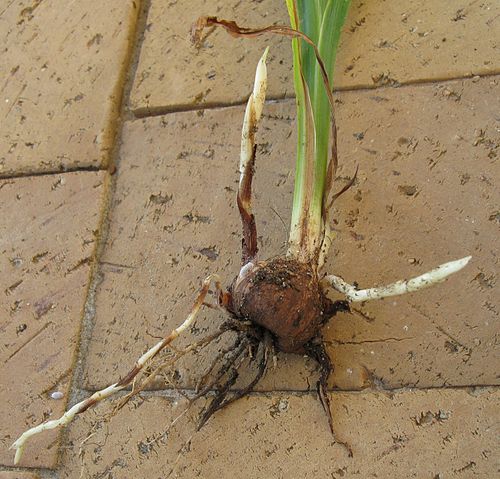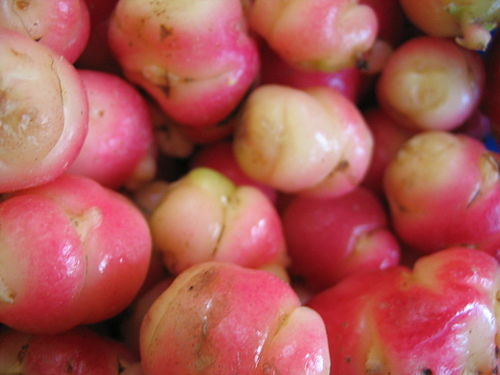Rhizomenoun
(botany) A horizontal, underground stem of some plants that sends out roots and shoots from its nodes.
Rhizomenoun
(philosophy) A so-called "image of thought" that apprehends multiplicities. See Rhizome (philosophy).
Rhizomenoun
A rootstock. See Rootstock.
Rhizomenoun
a horizontal plant stem with shoots above and roots below serving as a reproductive structure
Rhizome
In botany and dendrology, a rhizome (, from Ancient Greek: rhízōma (ῥίζωμα) – , from rhizóō (ῥιζόω) ) is a modified subterranean plant stem that sends out roots and shoots from its nodes. Rhizomes are also called creeping rootstalks or just rootstalks.
Tubernoun
A fleshy, thickened underground stem of a plant, usually containing stored starch, for example a potato or arrowroot.
Tubernoun
(horticulture) A thickened rootstock.
Tubernoun
(anatomy) A rounded, protuberant structure in a human or animal body.
Tubernoun
A fleshy, rounded stem or root, usually containing starchy matter, as the potato or arrowroot; a thickened root-stock. See Illust. of Tuberous.
Tubernoun
A tuberosity; a tubercle.
Tubernoun
a fleshy underground stem or root serving for reproductive and food storage
Tubernoun
type genus of the Tuberaceae: fungi whose fruiting bodies are typically truffles
Tuber
Tubers are enlarged structures used as storage organs for nutrients in some plants. They are used for the plant's perennation (survival of the winter or dry months), to provide energy and nutrients for regrowth during the next growing season, and as a means of asexual reproduction.



















